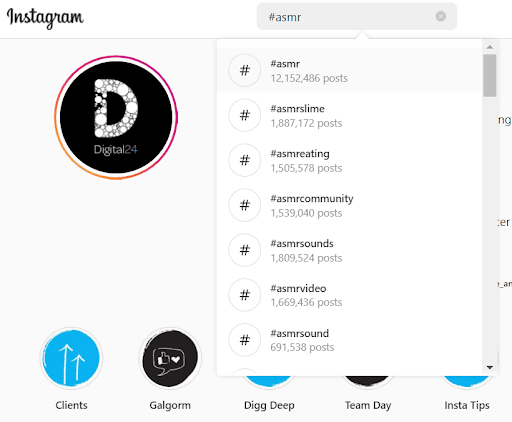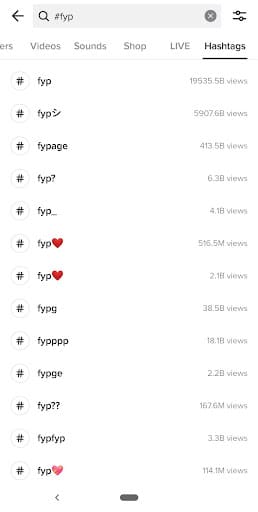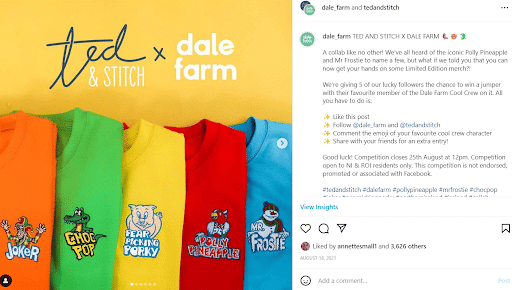Content creators are everywhere and the marketing potential and virality of a brand is without a doubt empowered by the content creation movement we’re living in today across social media.
All it takes sometimes is to walk down a street and you will see someone either creating content or watching it, whether it be teenagers creating a TikTok video or someone standing at a bus stop scrolling through their Instagram feed. In fact, even you reading this now is in a way engaging with content that has been created by someone who thought it might be of interest to you. With that being said, I, Lauren at Digital24, am a content creator and if you’re not already a social media content creator or you would like to hone your social content skills, read on to find out how to become a successful social media content creator.
Content creation can be time consuming, so you want to make sure the investment of your time and effort is paying off. There are many factors to consider when creating content for social media. Discover them here:
1. Understand Your Audience
Before you deep dive into digital content creation, it is critical that you not only understand your audience, but perhaps even more importantly you understand what platforms they are active on, rather than what platforms you are active on. It may mean that you need to create additional social media accounts for your brands on other social platforms such as TikTok and/or Pinterest for example. If this is the case, don’t shy away from it, embrace the change however daunting it may be, as it may transform your business for the better.
Zoomers/Generation Z
Generation Z’s content preference is video. They engage, they recreate and they scroll through videos. Their preferred platform is TikTok. They widely remain present on Instagram and the increase of video presence in the form of reels on Instagram is without a doubt a tactic to keep Generation Z on the ‘gram.
If your current target audience is Generation Z, therefore those born between 1997-2012, then you need to be creating and pushing out regular video content to keep this audience engaged. If this means getting yourself or your brand on TikTok, then do it; it’s the only way you’ll stay relevant to this generation! This generation is opinionated, so push the boat out with content targeted at them. A word of advice would be: Stay current and jump on TikTok trends as quickly as you can!
Millennials/ Generation Y
Millennials are the generation that grew up with the birth of social media. From Bebo, Snapchat, Vine and more, most from this generation are likely to have dabbled in many of the social media platforms over the years, and they may arguably be the most critical in terms of what functionality they like to see on social media platforms. Those born between 1981-1996 have seen it all and they know their likes and dislikes.
Millennials are active on a range of social media platforms from Instagram and Pinterest to Facebook accounts that they still scroll through out of habit, there are a lot of social media touchpoints that you can engage with your millennial audiences on. They are also the age group that is likely to engage with a Twitter debate or two.
Videos and carefully curated images are recommended for millennials. They aren’t as biased towards video than Gen Zers but as more platforms start to favour video content, a solid video content creation strategy should be set in place when targeting millennials. A word of advice would be: don’t put your eggs in one basket with this generation; make sure you are sharing the content you are creating across various platforms.
Generation X
Facebook and Pinterest are the two channels where you’re most likely to find those born between 1965-1980. This generation enjoys reconnecting with old friends on Facebook and discovering home and fashion inspiration on Pinterest. They are more likely to engage with images than younger generations and often aren’t as critical on social media content.
If you engage with this generation through asking questions on Facebook posts, they are more likely to respond than younger generations and don’t always require an incentive for doing so, unlike younger generations who are more motivated by competitions and giveaways; use this advice to your advantage when it comes to generating engagement!
Baby Boomers
There is not a huge presence of baby boomers present on social media, but if you’re lucky enough to be able to target this audience through social media, their preferred social media platform for content is Facebook. They are on the platform mainly for keeping in touch with family and friends from over the years, but they also like to keep up to date with current affairs and share the odd joke or two.
If you are creating content for this generation, my advice is to make it informative or humorous, where possible for your brand. They also tend to enjoy reflective quotes and affirmations along with some nostalgic content, so if you have archived content from years gone by, this audience are most likely to engage – perhaps you could stir up some engagement by asking if they remember a certain event or old packaging.
2. Set Your Tone of Voice
Once you have identified which audiences you would like to target and where you want to target them, it’s important to consider your online tone of voice.
To ensure your content is recognisable over time, it’s important to consider your brand persona in the form of your digital tone of voice. This not only helps to make your brand memorable and engaging, but it also can add structure to the content you’re creating, and can help you stay true to your brand and remain authentic.
To help you decide on the tone of voice for your content, you may want to create content pillars. This can help to ensure that your content aligns with your underlying values. It also helps you to plan your content and make sure you’re varying your content to cover all pillars of your brand successfully.
Examples of contrasting content pillars are:
- Relatable vs aspirational
- Carefully curated vs freestyle
- Competitive vs team player
- Informative vs just for fun
Once you have decided on your content pillars and therefore your online persona, you can start to plan out your content to cover your pillars and remain true to your brand. To further help with structuring your content in a way that is consistent and recognisable over time, you may then want to develop brand guidelines.
These brand guidelines can cover as much as you would like, from what font you will always use on Instagram story captions to the style of music you will use on reels to any graphic frames or colour pairings you use in graphics. Adding structure through adopting brand guidelines can help you remain consistent and organised, whilst all saving time when making decisions on for example, which font you should use each time you post on Instagram stories.
Top tip: Canva allows you to add brand assets such as fonts, colours and logos to a brand folder. This can be very helpful when creating content for brands for social media as it cuts down on the time required to create branded graphics, whilst also ensuring consistency in the look and feel of the brand.
3. Trending Hashtags
Hashtags can sometimes get forgotten about during content creation as it’s easy to get swept up in writing eye-catching post copy, but ultimately hashtags are at the heart of the social media algorithm. They allow your content to be picked up by for example, Instagram’s Explore section, Facebook’s Suggested For You feed, TikTok’s endless For You feed of videos that you might be interested in and Pinterest pins that are related to your search terms.
There is a fine line between being clever and spammy when it comes to hashtags and there is almost an art to it. By selecting a few hashtags with high search volumes, a few brand specific hashtags that you come up with and a few trending hashtags, your content will be on its way to nailing the social algorithm.
Here are a few examples of popular hashtags for you to consider:
The hashtag #asmr on Instagram features over 12m posts. Content using #asmr is video content that generates an autonomous sensory meridian response (ASMR) similar to a tingling sensation down the spine as discrete sounds are amplified. Often social media users get hooked into watching videos of this genre for long periods of time. By creating content relevant to #asmr, it could help to grow your organic social success amongst an engaged audience of ASMR fans, which for the record is a huge audience.

The hashtag #fyp is widely used on TikTok. It’s an acronym for “for you page” and sometimes content creators utilise #foryoupage in their content too. By including #fyp or #foryoupage in your TikTok content, you increase your chances of being featured on users’ “For You” feeds which features a stream of videos which are designed to be filled with relevant content for the user. This has great potential for increasing the likelihood of virality for your content.

4. Brand Collaborations
There may be a tool exclusive to Instagram for it, but it’s a powerful tool all the same for digital content creation. Linking up with brands or other creators such as influencers, using the brand collaboration feature on Instagram can help to increase reach and engagement on your content whilst allowing you to increase brand credibility through successfully partnering up with either a person of influence who compliments your brand and/or another reputable brand. There can be benefits to both parties and we have found growing success with this strategy when it comes to launching social media competitions and giveaways.
Example of a brand collaboration post on Instagram:

That’s a wrap for now. I hope you found this blog helpful and I wish you well on your quest to becoming a successful content creator!
P.s. this is your sign to go for it! Be confident in your ability and have some fun with content creation! If anyone asks, I told you to. And don’t forget, content is King…or Queen.
Lauren White
Senior Digital Marketing Specialist



